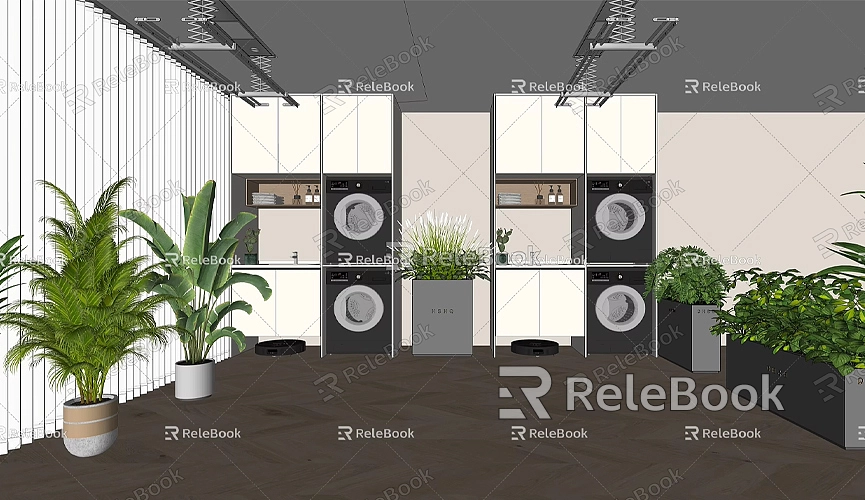How to import 3d model to sketchup
In modern architectural design, interior decoration, and game development, 3D modeling has become increasingly important. SketchUp, as a powerful modeling tool, is widely used in various design projects. This article will provide a detailed guide on how to import 3D models into SketchUp, covering different formats, common issues, and solutions, to help you work more efficiently on your design tasks.
Supported 3D Model Formats in SketchUp
Before importing a model, it's essential to understand the file formats that SketchUp supports. Common 3D model formats that can be imported include:
- SKP: SketchUp’s native file format, which is the most convenient option.
- COLLADA (.dae): Commonly used for 3D animation and game design, supporting conversion between various 3D software.
- 3DS (.3ds): The model format from 3D Studio, widely used across different design applications.
- OBJ (.obj): A universal 3D model format that supports various attributes like textures and colors.
- FBX (.fbx): Often used for exchanging animations and complex models.
Once you understand the supported formats, you can begin the import process.
Steps to Import a 3D Model

Importing a 3D model into SketchUp is a straightforward process. Here are the specific steps:
1. Open SketchUp: Start the SketchUp software and open the project where you want to import the model. Make sure your project is saved to avoid any loss during the import process.
2. Select Import: Click on the "File" option in the top menu bar, then choose "Import." In the import dialog that appears, select the type of file you wish to import. Choose the appropriate format, such as COLLADA, 3DS, or OBJ.
3. Find the Model File: Locate the 3D model file you want to import and click "Open." SketchUp will begin loading the model; the time it takes to import will depend on the complexity and size of the model.
4. Adjust the Model: Once the import is complete, you can use the Select tool to adjust the model's position and scale. Click and drag the model or use the Scale tool to resize it, placing it in the desired location.
Important Considerations When Importing Models

When importing 3D models, there are several important factors to keep in mind:
- Model Size: Ensure that the imported model is proportionate to your SketchUp project. If the model is too large or too small, it may complicate future editing tasks.
- Textures and Materials: The imported model may come with textures and materials. If these resources are missing, the model's appearance may be affected. It's best to check the model’s integrity before importing.
- File Path: Make sure the file path to your model is correct, especially when using external links. Place the file in an easily accessible location to avoid import failures.
Common Issues and Solutions
You may encounter some common issues during the import process. Here are some common problems and their solutions:
- Model Won't Import: If you receive an error during import, check if the file format is supported. Additionally, ensure that the file isn’t corrupted by trying to re-download the model file.
- Missing Textures: Sometimes, the imported model may lack textures. This is usually due to the texture files not being properly linked. Before importing, ensure that the texture files are in the same directory as the model file or manually relink the textures.
- Model Distortion: If the imported model appears distorted, it may be due to incorrect scaling settings. During import, check the scale settings to ensure they match the original model.
Importing High-Quality 3D Model Resources
Having high-quality 3D model resources can significantly enhance your workflow during project design. To enrich your design library, consider visiting professional 3D model websites. For example, if you need high-quality 3D textures and HDRIs while creating models and virtual scenes, you can download them for free from [Relebook Textures](https://textures.relebook.com/). This site offers a wealth of resources to meet your various needs. Additionally, if you require exquisite 3D models, you can download them from [Relebook Models](https://3dmodels.relebook.com/), which provides a vast selection of high-quality 3D resources to enhance your designs.
Integration and Editing
After importing a model, you will often need to make further adjustments and edits. You can use various SketchUp tools to modify the imported model, such as the Push/Pull tool to change its height or the Rotate tool to adjust its angle. These operations can help align the imported model with your design needs.
Moreover, using layer management can help you better organize the imported models. Assigning different models to different layers allows for quick switching and editing in complex projects.
While the process of importing 3D models into SketchUp is simple, the details and considerations involved are very important. By mastering the correct import steps and how to resolve common issues, you can greatly improve your workflow. Utilizing high-quality 3D resources is also a crucial part of enhancing project quality. We hope this article helps you easily import 3D models into SketchUp, allowing you to complete your design projects successfully. If you need more high-quality 3D textures and models, feel free to visit Relebook for a wealth of premium resources to support your design creativity.

